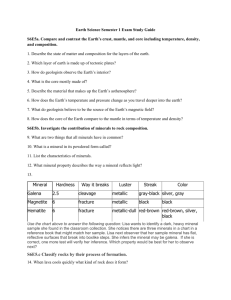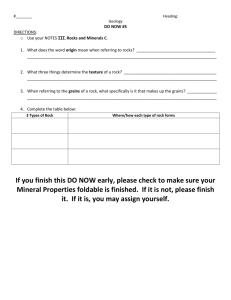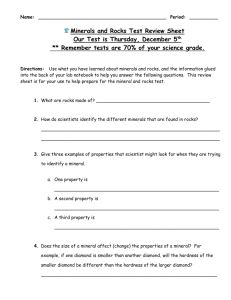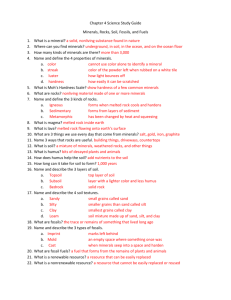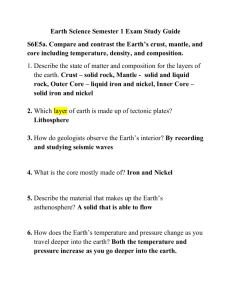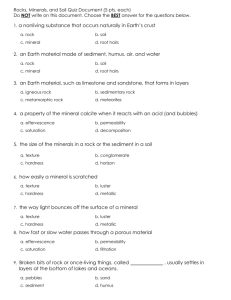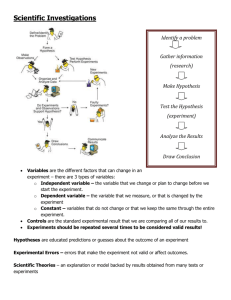Mineral, Rocks, and Soil Study Guide
advertisement
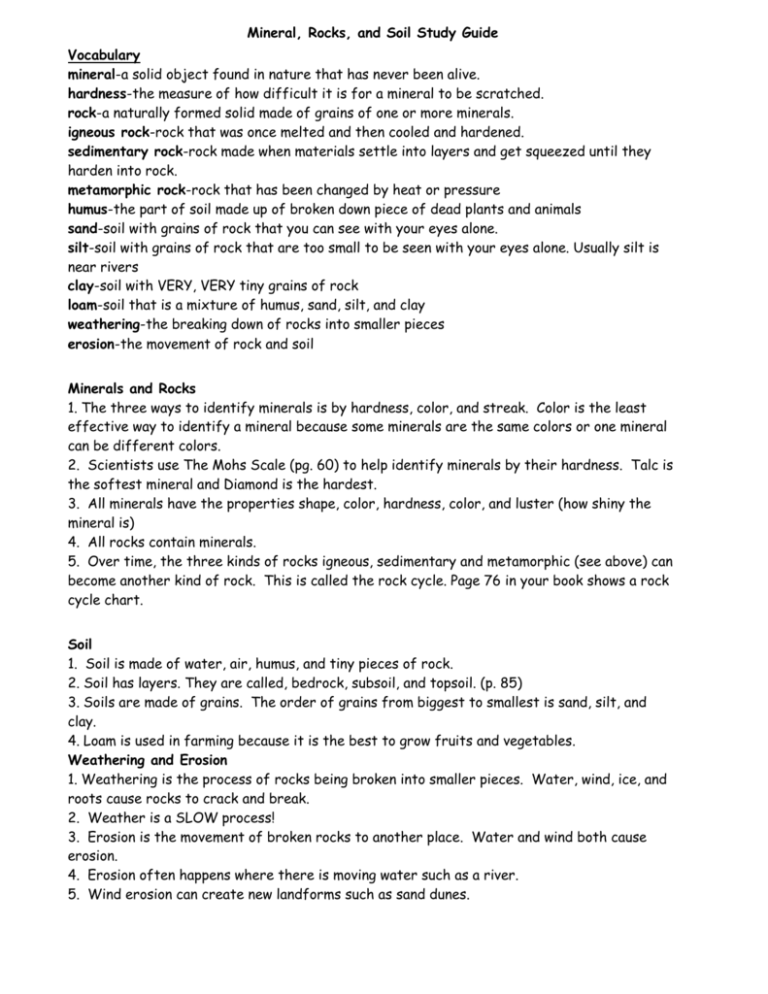
Mineral, Rocks, and Soil Study Guide Vocabulary mineral-a solid object found in nature that has never been alive. hardness-the measure of how difficult it is for a mineral to be scratched. rock-a naturally formed solid made of grains of one or more minerals. igneous rock-rock that was once melted and then cooled and hardened. sedimentary rock-rock made when materials settle into layers and get squeezed until they harden into rock. metamorphic rock-rock that has been changed by heat or pressure humus-the part of soil made up of broken down piece of dead plants and animals sand-soil with grains of rock that you can see with your eyes alone. silt-soil with grains of rock that are too small to be seen with your eyes alone. Usually silt is near rivers clay-soil with VERY, VERY tiny grains of rock loam-soil that is a mixture of humus, sand, silt, and clay weathering-the breaking down of rocks into smaller pieces erosion-the movement of rock and soil Minerals and Rocks 1. The three ways to identify minerals is by hardness, color, and streak. Color is the least effective way to identify a mineral because some minerals are the same colors or one mineral can be different colors. 2. Scientists use The Mohs Scale (pg. 60) to help identify minerals by their hardness. Talc is the softest mineral and Diamond is the hardest. 3. All minerals have the properties shape, color, hardness, color, and luster (how shiny the mineral is) 4. All rocks contain minerals. 5. Over time, the three kinds of rocks igneous, sedimentary and metamorphic (see above) can become another kind of rock. This is called the rock cycle. Page 76 in your book shows a rock cycle chart. Soil 1. Soil is made of water, air, humus, and tiny pieces of rock. 2. Soil has layers. They are called, bedrock, subsoil, and topsoil. (p. 85) 3. Soils are made of grains. The order of grains from biggest to smallest is sand, silt, and clay. 4. Loam is used in farming because it is the best to grow fruits and vegetables. Weathering and Erosion 1. Weathering is the process of rocks being broken into smaller pieces. Water, wind, ice, and roots cause rocks to crack and break. 2. Weather is a SLOW process! 3. Erosion is the movement of broken rocks to another place. Water and wind both cause erosion. 4. Erosion often happens where there is moving water such as a river. 5. Wind erosion can create new landforms such as sand dunes.


